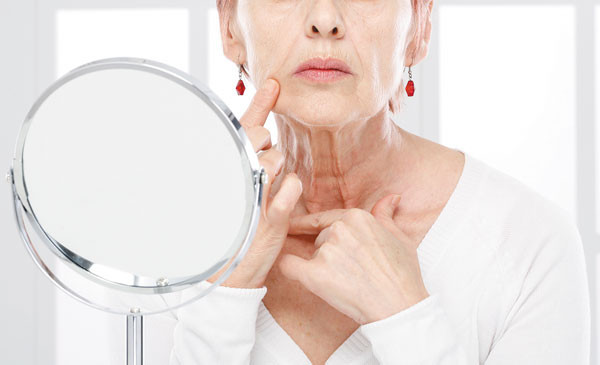Want to take years off your face? These treatments can rejuvenate your skin
An increasing array of nonsurgical products and procedures aim to reduce the effects of time and sun exposure.

Image: studiokovac/Thinkstock
It's often said that our lives are written on our faces. But if you feel like doing a little editing—erasing a few fine lines, softening a deep furrow, or evening out some patchy spots—there's an increasing array of products and procedures to help rejuvenate skin worn by time and sun exposure. "When it comes to skin treatments, there's lots of good news in therapies for medical conditions as well as cosmetic concerns," says Dr. Kenneth Arndt, adjunct professor of dermatology at Harvard Medical School and medical editor of the Harvard Special Health Report Skin Care and Repair.
A growing population of healthy, active older women who want to look as young as they feel has spurred the development of skin rejuvenation techniques that are more subtle and have much shorter recovery times than facelifts. "It's important to choose your treatments with care and to check and double-check the reputation and accreditation of clinicians performing invasive skin procedures," Dr. Arndt says. You may want to consult a dermatologist to weigh the possible risks and likely benefits of various treatments. Cosmetic procedures aren't covered by insurance, so cost might also be an important factor in choosing a skin rejuvenation procedure.
The most common procedures
The following are several often-used techniques to remove fine wrinkles, scars, uneven pigmentation, and other imperfections.
Botox. Injections of botulinum toxin—a category that includes Botox, Dysport, and Xeomin—are relatively affordable, have very few risks, and require no recovery time. And they're quite effective at temporarily smoothing a wrinkled face, brow, or neck.
Soft tissue fillers. Injections of soft-tissue fillers under the skin can add height to cheekbones, improve the jaw line, diminish acne or surgical scars, restore fullness to hollow cheeks and eyes, fill fine vertical lines, resculpt lips, and fill in nasolabial folds (the deep lines that run from the outside of the nostrils to the corners of the mouth). Some fillers, such as hyaluronic acid and poly-L-lactic acid, are eventually absorbed by the body. Others contain tiny beads of solid materials suspended in gel. The gel is absorbed over time, and the beads form a scaffold for collagen growth.
Chemical peels. Peels are used to treat wrinkles, age spots, discoloration, precancerous skin growths, and superficial scarring. An acid solution—usually glycolic, salicylic, or trichloroacetic acid—is applied to the skin, dissolving skin cells and removing the top layers of the epidermis. The effects vary based on how deeply the peel penetrates, which is determined by the type and strength of the solution used.
Microdermabrasion. In this procedure, the doctor or aesthetician sands an area with tiny aluminum hydroxide crystals to create smoother-looking skin. It's relatively inexpensive, and no recovery time is needed.
Microneedling . This technique—in which a doctor repeatedly applies an electric or battery-operated instrument containing multiple small, thin, sharp needles to the skin—isn't as painful as it sounds. The needles cause tiny injuries that stimulate the production of collagen and elastin. Therapeutic substances, such as hyaluronic acid or ascorbic acid, can be applied before or after needling so the substance penetrates deeply. This procedure is relatively risk-free and inexpensive.
Laser therapy. Lasers can remove moderate to deep lines and wrinkles and significantly improve skin tone, texture, and tightness. Lasers' ability to target specific types of cells in distinct skin layers enables them to treat conditions such as port-wine stains, pigmented birthmarks, and spider veins. They can also erase acne pits and many other scars. Your dermatologist or cosmetic surgeon can help you determine which type of laser therapy is best for you.
Yes, you can try these at home!Home chemical peels and micro-derm-abrasion kits generally have the same ingredients as medical professionals use, but in lower concentrations. There are also a variety of home microneedling rollers that can be used to deliver retinols, moisturizers, and other compounds into the skin. Home laser, LED light, and ultrasound devices are also less powerful than professional equipment, but they can be effective if you have the patience to perform treatments on a frequent basis for many weeks or months. These products and devices can remove dead skin and diminish scars and fine lines safely for a fraction of the cost of professional treatment. Because the results are less dramatic, nonprescription options work best for minor skin flaws. Be sure to read and follow directions to use them safely. |
Disclaimer:
As a service to our readers, Harvard Health Publishing provides access to our library of archived content. Please note the date of last review or update on all articles.
No content on this site, regardless of date, should ever be used as a substitute for direct medical advice from your doctor or other qualified clinician.















